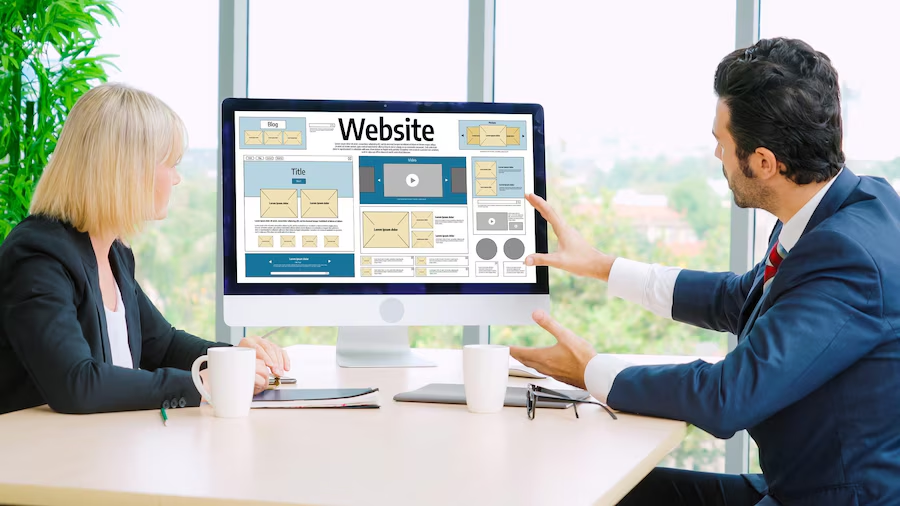Should a Business Continuity Plan Be Applied to a WordPress Website?
In today’s digital age, businesses rely heavily on their online presence to operate effectively and continuously. A website, especially a WordPress site, is often one of the most critical aspects of a company’s digital infrastructure. So, should a business continuity plan (BCP) be applied to a WordPress website? Absolutely. This article dives deep into why a BCP is crucial for any WordPress site, the factors to consider, and how to implement such a plan to ensure your online business stays operational despite disruptions.
What Is a Business Continuity Plan (BCP)?
A business continuity plan (BCP) is a strategic framework that outlines how an organization can continue operating during and after a disruptive event. These disruptions can range from natural disasters to cyberattacks or even system failures. The plan focuses on minimizing downtime and mitigating risks to keep the essential functions of the business running smoothly.
When Should a Business Continuity Plan Be Implemented?
A BCP should be implemented before any disruptions occur. Pre-emptive planning ensures your business can handle unforeseen events with minimal damage. Waiting until a problem arises can lead to significant downtime, lost revenue, and damage to your business’s reputation.
A WordPress website is no exception. Whether your business is a small blog or a massive e-commerce store, applying a business continuity plan to your WordPress site ensures you’re prepared for disruptions that might impact your online presence.
Why a Business Continuity Plan Is Essential for WordPress Sites
WordPress powers over 43% of the internet, making it one of the world’s most popular content management systems (CMS). However, its popularity also makes it a prime target for hackers, malware, and other threats. This risks WordPress sites, especially when hosting critical business information or e-commerce functionalities. Here’s why you need a BCP for your WordPress website:
- Cybersecurity Threats
Cyberattacks like hacking, phishing, and malware can severely disrupt your website. A solid business continuity plan helps you quickly respond to and recover from these threats by having data backups, security patches, and response procedures in place.
- Server Failures
Servers can die unexpectedly due to hardware issues, hosting provider errors, or power outages. A well-implemented BCP can include utilizing redundant servers, implementing cloud storage, and automating backup processes.
- Website Updates and Plugin Conflicts
WordPress requires frequent updates to maintain its security and functionality. However, these updates can sometimes conflict with existing plugins or themes, causing parts of the website to malfunction. A BCP should include rollback options and testing environments to prevent downtime.
- Natural Disasters and External Events
If your website is hosted in a region prone to natural disasters like floods, earthquakes, or hurricanes, there’s always a risk that the data centre housing your website could be affected. A business continuity plan ensures data redundancy, disaster recovery processes, and proper response times.
- DDoS Attacks and Increased Traffic Surges
Distributed Denial of Service (DDoS) attacks or even legitimate traffic surges from a viral post can overwhelm your WordPress site. A continuity plan could involve:
- Using a content delivery network (CDN).
- Setting up load balancers.
- Even scaling your hosting services to accommodate traffic spikes.
Elements of a Strong Business Continuity Plan for WordPress Sites
A successful BCP for a WordPress website should include several core components to ensure resilience in the face of potential disruptions:
- Risk Assessment
Identify the specific risks associated with your WordPress site. These risks could include cyber threats, server downtime, natural disasters, plugin conflicts, etc. Conducting a comprehensive risk assessment helps prioritize the threats and determine which elements of the site need the most protection.
- Backup and Recovery Solutions
An essential part of any BCP is having a reliable backup solution. Regular backups of your WordPress site ensure that you can quickly restore your website in case of a failure. Opt for automated daily backups and ensure the backup includes your database and files.
- Disaster Recovery Plan
A disaster recovery plan (DRP) is integral to your BCP. It should outline the steps to restore your WordPress site after a disruptive event. For example, it should detail where your backups are stored, how to retrieve them, and how to get your website back online.
- Website Monitoring
Implementing real-time website monitoring tools can alert you when something goes wrong with your WordPress site. This allows for quicker responses to potential disruptions, reducing downtime. Monitoring services can check for uptime, malware, DDoS attacks, and overall performance.
- Security Measures
The security of your WordPress site should be at the forefront of your BCP. Implement measures like:
- SSL Certificates to encrypt communication.
- Two-factor authentication (2FA) for all users.
- Firewalls to block malicious traffic.
- Regular plugin/theme updates to prevent vulnerabilities.
- Communication Plan
When a disruption occurs, it’s crucial to have a communication plan in place. This plan should detail how you will inform your customers, employees, and stakeholders about the event, its impact, and the expected recovery time.
Who Should Have Access to the Business Continuity Plan?
Only relevant personnel within your organization should have access to the BCP. Typically, this includes:
- IT personnel who are responsible for the technical aspects of the website.
- Key decision-makers or business owners who need to oversee the overall continuity process.
- Security teams who handle cybersecurity and potential threats.
- Any external vendors or third-party providers involved in website hosting, security, or recovery.
Access to the BCP should be restricted to avoid unauthorized changes or leaks of sensitive information.
Where Should Business Continuity Belong in an Organization?
The responsibility for business continuity should ideally be a collaborative effort between multiple departments. For WordPress sites, this often involves a mix of:
- IT and Web Development Teams: Responsible for implementing the technical aspects of the plan, including backups, security patches, and recovery procedures.
- Management and Executive Teams: Oversee the overall strategy, ensuring the business goals align with the continuity plan.
- Customer Service Teams: Should be prepared to communicate with clients in case of downtime or other disruptions.
In larger organizations, this responsibility often falls within the Risk Management or IT departments. It’s crucial that all key stakeholders are aware of their roles and responsibilities in an emergency.
The 4 R’s of Business Continuity
A successful business continuity plan typically revolves around the 4 R’s of business continuity:
- Reduction: Minimizing the risks and impact of disruptions. This could involve firewalls, implementing regular updates, or securing offsite backups.
- Readiness: Being prepared to act when a disruption occurs. This includes ensuring that the plan is regularly updated and that all relevant staff members know their roles.
- Response: The actions are taken when a disruption happens. This could involve switching to backup servers or communicating with customers about the outage.
- Recovery: Ensuring the business and the WordPress website are restored to full functionality as quickly as possible.
Where Does BCP Sit?
A business continuity plan should be at the heart of an organization’s IT strategy and an integral part of its overall business operations plan. In the digital world, a well-functioning website is a key part of most businesses, making it critical that the BCP is fully integrated with the website’s management.
Final Thoughts
A WordPress website is often a business’s digital storefront, and any downtime can have severe financial and reputational consequences. Applying a business continuity plan to a WordPress site is not just a good idea—it’s essential. By identifying risks, creating a comprehensive disaster recovery plan, and implementing best practices for security and recovery, businesses can ensure their websites remain operational even during disruptive events.
Questions & Answers
Q1: When should a business continuity plan be implemented?
A BCP should be implemented before any disruptions occur. Planning minimizes downtime and mitigates risks when disruptions inevitably happen.
Q2: Do you need a business continuity plan for a WordPress site?
Yes. WordPress websites are vulnerable to various risks, such as cyberattacks, server failures, and plugin conflicts, all of which can be mitigated by having a solid BCP in place.
Q3: Who should have access to the business continuity plan?
Relevant personnel, such as IT teams, business owners, and security personnel, should have access to the BCP, which should be limited to avoid unauthorized tampering.
Q4: Where does business continuity belong in an organization?
Business continuity should be a collaborative effort between IT, management, and other stakeholders. In larger organizations, it typically falls under Risk Management or the IT department.
you may also read
What Digital Business Card is Better than HiHello? Your Ultimate Guide




